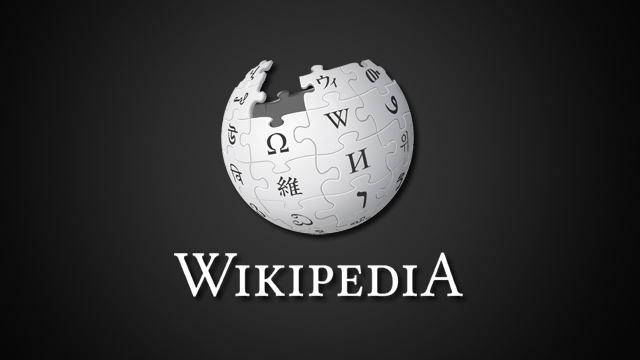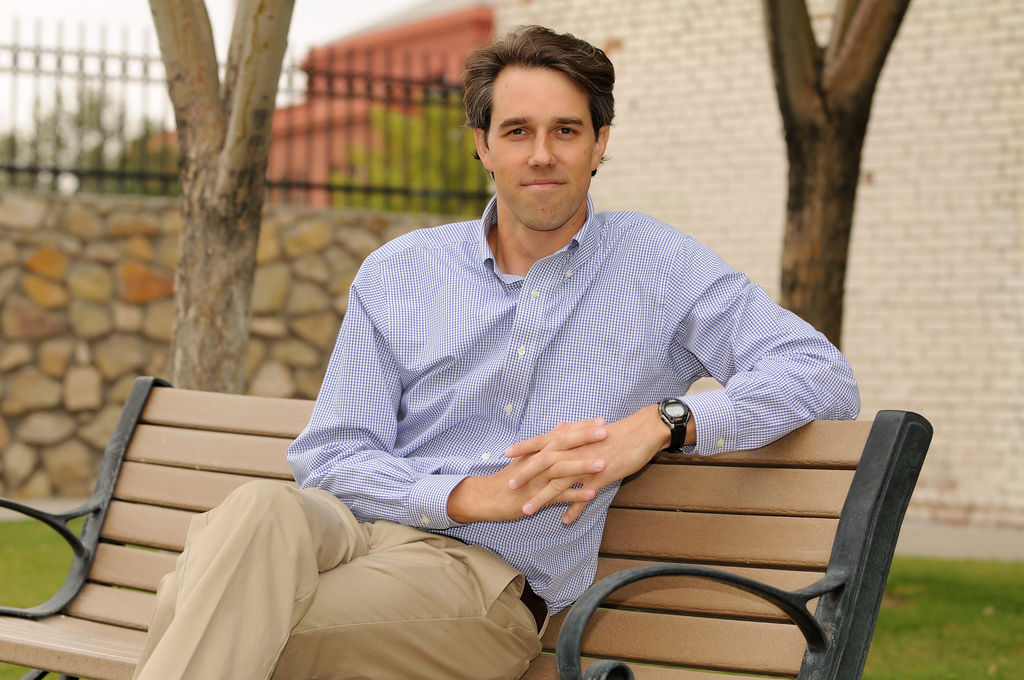Why you shouldn’t trust Wikipedia: Propagandists for a Broken Establishment
04/11/2019 / By News Editors

Science, whether in academia or in the mainstream media, television or popular online outlets, is the rarefied domain of “experts,” we are told. To prove they are experts, the gatekeepers of the Academy present a pedigreed background, bristling with prestigious degrees, honors and awards, publication in the top journals of their field, and other trappings of success. Virtually any important topic involving medicine, healthcare, finance, even behavior is directed and codified by these preeminent spokespersons, marching in ideological lockstep. Every major medical organization from the AMA to the College of Physicians and Surgeons to the National Academy of Science to the leading scientific publications such as the Lancet and BMJ all are staffed by people who rarely if ever challenge the consensus, and virtually every one of our government agencies is likewise staffed with consensus scientists. Medical theory and practice are controlled by local and state medical boards that watch carefully to ensure that physicians are practicing “science-based medicine,” with an absolute unwavering belief that this is the only way to practice medicine.
(Article by Gary Null and Helen Buyniski republished from PRN.fm)
Scientific evidence published in a peer-reviewed journal lives or dies by reputational association. If it comes from a respected institution, it must be true. And the alternative is also true: if one day a board-certified physician in any specialty realizes that maybe his patients are not improving or recovering because there is something wrong with the standard protocols, and hypothesizes that the truth lies outside some officially accepted paradigm, the scientific powers that be shake their heads and say: what a foolish thought. There are millions of scientists working every day in private labs, government agencies, universities, and corporate research centers, dedicated not just to finding the truth but to repeating it ad nauseam, obsessively polishing it, buffing the uncertainty out – surely they can’t all be wrong. These epistemological overseers view any part of medicine outside the generally-accepted paradigm as – in the frequently-cited words of Wikipedia co-founder Jimmy Wales – the work of “lunatic charlatans.” Supporting Wales are a limited number of self-styled Skeptics who believe in an even more radical or ultra-orthodox form of “science-based medicine” than the rest of the medical establishment, many of whom have – after years in actual clinical practice, dealing with the realities of patients and disease – begun to grudgingly admit there might be something to these complementary and alternative modalities that have persisted, some of them, for thousands of years.
These Skeptics, free of intrusion from clinical reality, are the ultimate keepers of the scientific faith, guarding the gates against any heretics who question the prevailing wisdom. Hence despite the trillions of dollars flowing into the medical-industrial complex, we have no cures for major diseases from Alzheimer’s, Parkinson’s, and ALS to anxiety, depression, PTSD, to chronic heart failure, cancer, and diverticulitis. We do have treatments for everything – indeed, our life today has been pathologized so heavily that the normal behaviors of people going through life issues, behaviors like grieving and stress, are now pathology. Millions of children every day take medications, none of which are curative but all of which are to be dutifully taken in order to maintain symptoms, creating lifetime customers for the pharmaceutical industry.
There is a growing discontent among millions of parents who have obediently followed the instructions of their physicians and given their children vaccines, assuming they are safe and effective only to watch their child have an adverse reaction to the vaccines- anything from delayed learning to autism to death. At least half the people dying of cancer are dying from the treatments. People are prescribed antipsychotic medications for off-label uses who then become psychotic and commit horrific acts of violence. The majority of mass shootings are committed by individuals taking psychiatric medication. Veterans, active and retired, many of them on these same drugs, are committing suicide at a rate of 20 per day – putting a gun in their mouths and killing themselves. Almost 60,000 people died after taking the “painkiller” Vioxx – more than all American casualties in the Vietnam war, yet Medicine chose not to change its ways, no matter how horrific the casualties of the dominant paradigm. Merck, the drug’s manufacturer, merely paid a fine and moved on to the next fraud. As with any pharmaceutical company, the deaths of patients are merely the cost of doing business, collateral damage in the pursuit of the almighty bottom line. Medicine doesn’t change, it doesn’t apologize, and no one is held accountable – not the physician, nurse, pharmacist, hospital, nor the corporations profiting from this. In effect, the entire medical industrial complex has been indemnified.
It is little wonder that some individuals have finally said, “enough!” Parents are fighting back, but only after they are victimized. They begin to study and read the literature to uncover the discrepancies between CDC lies and actual scientific facts, the contradictions and counterindications. They get angry. Instead of addressing seven million parents’ grievances, the CDC and FDA and the entirety of the medical-industrial complex aided by the full weight and power of the medical media are now pushing the line that if you question vaccines, you’re now one of the most deadly threats to health on the planet – as bad as the Ebola virus. Those who have dealt with injury or loss of a child face the additional hardship of being attacked for trying to become informed and educated. Think of how Orwellian that is. The moment you become fully aware, informed, and educated on a particular subject, one of deep personal importance to you, you’re the enemy. Who better to vilify you than those self-appointed ultra-orthodox Skeptics and Jimmy Wales of Wikipedia?
Let us take a moment to bring some sanity to this discussion. If science is all we are told that it is, if every miracle drug is truly a miracle, if the cure for cancer will arise from our next tax-deductible check to the American Cancer Society, we should be able to prove their case. We have taken the time to review all of the science in “science-based medicine” to see if there are any cracks in the facade of this indomitable paradigm of healing and virtue and authority. And we are absolutely overwhelmed at how the American public has been lied to and manipulated, according to orthodox science’s own record – of lawsuits, settlements, investigations into the accuracy and legitimacy of the entire medical-industrial complex. The results – fully footnoted and sourced – are shocking. Today’s science is rife with fraud: why isn’t Wikipedia challenging it?
A scientific experiment’s status rests on whether it can be replicated. By those standards, oncology is very, very sick. A large-scale six-year undertaking by Dr. Tim Errington and the University of Virginia’s Centre for Open Science was unable to replicate any of the findings from three out of five seminal cancer studies. Two were inconclusive, while a third wasn’t even in the ballpark. “It’s worrying because replication is supposed to be a hallmark of scientific integrity,” says Dr. Errington. Given the toxicity of popular cancer treatments, these results are doubly disturbing. If the trials demonstrating chemotherapy’s effectiveness cannot be reproduced, the validity of the therapies must be reconsidered.1 Who on earth would undergo the pain and suffering of chemotherapy if they did not believe there was remission at the end of the rainbow? A 2012 examination of cancer studies published in Nature found the circumstances even direr, with only 10% of studies holding up to attempts at reproduction. The authors found the low success rate neither sustainable nor acceptable and urged researchers to do better. The Nature study cited a German study (conducted by pharmaceutical conglomerate Bayer, no less) that found only 25% of preclinical cancer trials were reproducible and noted that despite this fact, some of the drugs tested had moved on to clinical trials – meaning patients were being subjected to experimental regimes that had never been shown to be effective. The researchers pleaded for their fellow scientists to focus less on flashy results based on flawed preclinical and animal models, “poorly characterized tumor cell lines that inadequately recapitulate human disease,” and other corner-cutting and time-saving measures like artificial endpoints and criticized journal editors and grant review committees for looking for the “perfect story.”2
Because researchers depend on publication in order to obtain funding, jobs, promotions, and tenure, the incentive to fudge results is enormous; editors, then, “must allow for the presentation of imperfect stories, and recognize and reward reproducible results, so that scientists feel less pressure to tell an impossibly perfect story to advance their careers.” Once one researcher gets on the front page of Nature with a fudged study, the goalposts have been moved, and all others – even the most honest and scientifically rigorous – are now measured by those standards. Beyond those who “want to believe” – researchers with conflicts of interest testing drugs in which they’re financially invested – phony results turn even honest scientists into agents of Big Pharma.
And cancer researchers are no better than the rest of institutional science when it comes to reporting results. A STAT investigation in 2015 found that every single trial conducted by Memorial Sloan Kettering Cancer Center was published late or not at all, in violation of a 2007 law mandating the speedy publication of clinical trial results. Of the 39 trials examined, two involved an experimental drug, ganetespib, that caused serious adverse effects in more than a third of study participants, with complications including bowel and colon obstructions and even death. While those results languished in publication limbo, other doctors were no doubt running their own trials without the benefit of knowledge that this drug could kill their patients before the cancer did. And Sloan Kettering is far from an exception – STAT also called out the Hoosier Cancer Research Institute, which ended a 2009 study of Avastin in breast cancer patients because of potentially life-threatening adverse effects, for its failure to report the negative results of the trial, allowing other doctors to potentially treat patients with the dangerous drug.3
With more and more attention on the prevalence of fraud in the literature on cancer treatment, we should be at the brink of a major medical paradigm shift, yet a glance at Wikipedia suggests there is absolutely nothing wrong with the status quo in oncology. Wikipedia’s editors spend the lion’s share of their time “debunking” “quack” cancer treatments instead of questioning the prevailing wisdom on chemo, radiation, and the rest of the “slash and burn” protocols that are at least as likely to kill patients than cure them. And oncology is just the tip of a rotten, fraudulent iceberg.
A 2016 study published in Nature found over 70% of researchers had tried and failed to reproduce experiments conducted by another scientist. Worse, half could not even reproduce their own experiments. The study’s results were no fluke – 1,576 researchers were queried about their experiences – but the cognitive dissonance revealed in their answers to the study questionnaire was illuminating. More than half (52%) agreed there was a “crisis” of reproducibility, but most still trusted the published literature over their own experiences, and less than a third (31%) believed failure to reproduce published results meant a study was wrong.4
Some researchers blame the culture of scientific research for driving scientists to publish flashy results without attempting to verify them with follow-up studies. Bristol University biological psychology professor Marcus Munafo says the emphasis on “high-risk, high-return results” nearly scared him out of science entirely when the results of his experiments didn’t square up with those in his textbook, and only later did he realize that the textbook science had been “tidied up” to look more impressive. Published literature “promotes impact over substance, flashy findings over the dull, confirmatory work that most of science is about,” according to Dame Ottoline Leyser, director of Cambridge University’s Sainsbury Laboratory, who stresses it’s less about fraud than it is about trying to excite and impress – other scientists, peer-reviewed journals, and grant-giving institutions.5
An (ironically unpublished) study conducted by the American Society for Cell Biology found at least two-thirds of survey respondents had been unable to reproduce results they had published, while even pharmaceutical companies’ own researchers admit that less than a quarter of prominent papers are reproducible, according to Nature, one of the publications which has been the loudest in demanding scientific reform. “There is a very real temptation to ignore a result that does not conform to our preconceptions, or to recast it so that it does. Data-dredging is used to find statistically significant results that justify a publication,” Begley et.al. write. Worse, institutional pressure to publish shoddy science can push jerry-rigged data into print: a third of trainees at the MD Anderson Cancer Center said they felt pressure to “prove a mentor’s hypothesis” despite data that did not agree, while a fifth had published their own results despite doubt, often because their course of study required the publication of a “high-impact paper.”6 Becoming a true believer is thus a survival mechanism, allowing the fledgling scientist to reimagine the time and money wasted pursuing a pharmaceutical dead end as worthy causes. Researchers capable of making silk purses from the sows’ ears of dud experiments win the day, while “the core instinct of science – skepticism – is punished by the current system.”
The same Nature study that found scientists trusted the published literature even while admitting there was a crisis of reproducibility also found that there were few incentives to publish replications of previous researchers’ studies – whether successful or not. Some even reported that they were only able to publish their failed replication after “playing down comparisons” with the study they had tried to replicate. While only 13% had ever published an unsuccessful reproduction, only 10% had ever been rejected from doing so – meaning most had simply never tried. Reproducing studies is expensive and time-consuming, but as it becomes clear that a large body of science is simply not reproducible, it becomes equally clear that even more unreproducible science has merely flown under the radar.
A study conducted the following year focusing on social science studies published in Nature and Science from 2010 to 2015 found suspect results were rampant. One third of the 21 studies examined could not be reproduced at all, and those effects they could replicate were only about half as strong as in the original studies. This study, it should be noted, was conducted with the full cooperation of the original researchers – a favorable condition most experimenters attempting to reproduce results do not have – and clearly represents the best of all possible scientific worlds.7A 2015 study in Science focusing on psychological studies turned up a similarly dismal rate of one-third to one-half of findings that were reproducible, but found the highest single predictor of reproducibility was strength of original results.8 Essentially, if the original study showed borderline-significant results, it was much less likely to be confirmed in a repeat study.
And these are merely the honest mistakes. Conflicts of interest further complicate the matter. Big Pharma has largely taken up the slack every time the National Institute of Health’s budget is cut, and by 2014, pharmaceutical companies were paying for six trials for every one funded by the NIH. A University of Sydney study confirmed last year what everyone has long suspected: pharmaceutical companies prioritize “lines of inquiry that focus on products, processes or activities that can be commercialized and marketed” over methods of healing that don’t present an easy profit opportunity.9 Pharmaceutical firms will not fund research into the benefits of deep breathing, or the curative properties of high-dose vitamin C, because they can’t cash in. They will fund novel ways to profit off existing drugs – former NEJM editor Marcia Angell revealed in 2009 that only 11% of the 667 drugs approved by the FDA between 2000 and 2007 represented innovations or even improvements on existing treatments, while a full three-quarters represented old wine in new bottles – off-patent or soon-to-expire drugs subjected to molecular tweaks allowing a company to file for another patent.10 They will help trials along every step of the way, taking care that their money is spent wisely – it costs as much as $2 billion to develop a new drug, according to DrugWatch. A Washington Post review analyzed a year’s worth of studies on new drugs published in the NEJM, finding of 73 studies, 60 were funded by a pharmaceutical company, 50 included authors who were drug company employees, and 37 lead researchers had accepted drug company money.11
Because so much of what passes for medical orthodoxy today is based on low-quality evidence in which the drug is only marginally superior to a placebo, it’s very likely the clinical trials used to approve that drug are not themselves reproducible at all. Since we know that as many as half of clinical trials funded by the National Institutes of Health never make it to publication,12 and that negative results are less likely to be published than positive results,13 we can be sure the studies hailed as “proof” of the drug’s efficacy were cherry-picked from a slew of less favorable results, especially with pharmaceutical companies themselves funding an ever-larger portion of clinical trials. Findings of adverse effects, particularly serious ones, often escape publication entirely,14while the weak positive findings, no matter how dubious, are stretched even further to maximize prescribing possibilities. A 2008 study of antidepressant drug trials confirmed that the SSRI paradigm – which frames depression as a neurochemical imbalance – is built on just such a fraudulent foundation. The drug companies published 97% of positive studies, while just 39% of “questionable” or “negative” results ever saw the light of day, and a third of those were spun to make the results appear positive. Because of this distortion, the effect size of the positive studies appeared almost a third larger than the data actually showed, and any clinician consulting the literature would be unable to accurately evaluate the drugs’ risk-benefit profile without data on side effects.15 This was GlaxoSmithKline’s modus operandi in selling its antidepressant Paxil, which was never approved for treatment of teenagers and which demonstrated an increased likelihood of suicidality in depressed patients during clinical trials. This alarming adverse effect was swept under the rug, Paxil was marketed off-label to millions of doctors illegally for prescriptions to teens who became suicidal or psychotic and died. Glaxo eventually pleaded guilty to criminal and civil fraud charges and paid $3 billion in what was then the largest fraud payout ever by a drug company, agreeing to place a “black box warning” on their prescribing labels.16 An effort to reproduce the clinical trials that had led to the approval of Paxil not only found no clinically significant effectiveness versus placebo, but turned up significant increases in suicidal ideation and behavior among the test population. This is a drug that should never have gone to market.17 But $3 billion is nothing next to the $25 billion GSK made in profits through the illegal sales of those drugs.18
John Ioannidis famously made the case in a 2005 paper that most published scientific findings are false. The overwhelming bias against publishing negative results favors the one study that claims Paxil is manna from heaven for depressives over the 19 that claim it leaves patients worse than it found them, and drug marketers do the rest. Ioannidis even stated “The greater the financial interests in a given field, the less likely the research findings are to be true.” If most studies do indeed measure science’s prevailing bias rather than the facts, it’s no surprise that these journals keep toeing the party line – they have no choice.19 All researchers want results they can publish – and negative results are the second-class citizens of the experimental world. If they do manage to see the light of day, it’s often in journals set up by well-meaning publishers to solve the reproducibility problem that instead end up ghettoizing it. Negativland, Positively Negative – cutesy names aside, publishing in these does not carry the same promise of prestige that a BMJ or a National Academy of Sciences offers.20 Pharmaceutical companies have “bought” senior doctors, institutions, and universities, according to the University of Copenhagen’s Peter Gotzsche, who likens the industry to organized crime; with this power, they dictate where the lines are drawn that scientific research is then forced to color between.21
The stubborn persistence of this phenomenon despite legal and institutional remedies indicates that it goes much deeper than the defenders of orthodox medicine would like to believe. In 2007, the FDA Amendments Act required that “applicable clinical trials” register and report their results within a year of the trial’s completion on ClinicalTrials.gov, with a penalty of $10,000 per day if researchers failed to report. Yet the FDA rarely levies these fines, with both sides preferring to merely ignore the law. STAT conducted an investigation in 2015 that found 74% of industry trials were reported late or not at all. For academic institutions, fully 90% were late or not reported. Had the FDA chosen to collect the daily fines starting in 2008, it would have been $25 billion richer by the time STAT’s study was published.22 But it’s no surprise that individual institutions don’t follow the law, because neither does the National Institutes of Health itself. STAT found just 38% of the NIH’s own scientists reported results within the legal deadline in 2013. If those who set the rules do not follow them, they can hardly expect anyone else to do so. NIH’s casual disregard for the rules draws curious parallels with both the behavior of pharmaceutical companies – caught time and time again pushing drugs off-label and covering up adverse effects, paying massive fines dwarfed only by their massive profits – and even Wikipedia’s administrators, who stringently enforce the rules against “newbies” while violating them at every turn when it permits them to push their own religion of science-dogma.
As Ioannidis points out, much of fake science merely reinforces existing scientific dogma. A self-sustaining feedback loop is set up that does not permit dissenting views to interfere with its groupthink. But the danger of believing in propaganda over checking one’s own work is that shoddy and corrupt consensus science can become law, as is happening with vaccines all over America. Parents – seven million with vaccine-damaged children – are told to trust pharmaceutical companies with truly egregious track records over their own experiences. Unlike the scientists in the Nature study who believe what’s published in scientific journals over the results of their own experiments, however, these parents cannot merely close the cover on an autistic or otherwise brain-damaged child.
Merck, makers of the MMR vaccine (which, as mainstream media has tirelessly reminded us since Andrew Wakefield published the study that ended his career, is perfectly safe), was sued by two former employees who claim the company faked the efficacy tests for the vaccine. Stephen Krahling and Joan Wlochowski blew the whistle on their former employer in August 2010, alleging that not only was Merck aware that the vaccine was less than the purported 95% effective, but that it manipulated test results by using the vaccine strain of the measles virus, adding rabbit antibodies to the blood to increase the apparent effectiveness, and fudging pre-vaccine blood data. Not only did Merck defraud the US government – which purchases more than 50% of all MMR doses sold – it also threatened the two scientists with jail time if they told the FDA about the fraud taking place in the company’s labs.23 Merck’s subpar MMR vaccine, they said, used the faked stats to pass off a low-efficacy, much-degraded mumps vaccine as one that was 95% effective. The failure of this vaccine to confer immunity at all – let alone herd immunity – is believed to have resulted in outbreaks starting 20 years ago in the UK and Europe – yet it’s not vaccinating that is presumed to be the cause of the current measles clusters in the US!
Two more class action lawsuits hit Merck in 2012 over its complete control of the MMR market, alleging the pharma giant violated state laws and the Sherman Antitrust Act with monopolistic and anti-competitive practices. Merck’s lies about the 95% effectiveness of its vaccine “deterred and excluded competing manufacturers,” according to one suit which pointed out that had another company known there was a market for an effective mumps vaccine, it would have been willing to sink research funds into developing one. Because Merck is the only company licensed to sell the MMR vaccine, it is critical to maintain the illusion of 95% efficacy, lest a competitor be permitted to enter the market. The other suit alleges that by selling an ineffective vaccine to the government and other purchasers and calling it a 95% effective vaccine, Merck violated the False Claims Act. Merck has since stonewalled and obfuscated at every turn, refusing to show efficacy data yet claiming efficacy as a defense.24 In recent years, it has simply lobbied for the shot to be made mandatory, with no religious or philosophical (such as the philosophy of “I refuse to have my child injected with a vaccine that doesn’t actually vaccinate against the stated disease”) exemptions, ignore all data that does not fit its wholly false narrative, and hope the plaintiffs run out of money first. Sadly, this is usually a winning strategy for Big Pharma. It’s not called “small” pharma, after all.
This year, the Danish Cohort Study was published in the Annals of Internal Medicine, purporting to vindicate the beleaguered MMR vaccine once and for all. Dr. Brian Hooker, who exposed the CDC’s cover-up of the 2003 Verstraeten study, carefully dissected this piece of unscientific fraud, showing that it proves nothing except that scientists will publish whatever a pharmaceutical company pays them to. Statistical anomalies are apparent from the beginning – the study ostensibly used Denmark’s population registries to examine children born in Denmark to Danish mothers, yet the autism rate in the sample population was significantly lower than the autism rate of the Danish population – meaning the researchers made some 4,400 autistic children disappear, presumably because their presence pointed toward a conclusion they’d already ruled out. Nearly a third of the children they did include were too young to receive an autism diagnosis, further biasing the results in favor of the vaccine, and children with genetic factors predisposing them to autism were included in the sample. The researchers used two different vaccines, typically given at two different ages, meaning half the children only received one shot before the typical age at which autism is diagnosed – and to further confuse matters, children diagnosed as autistic shortly after receiving their shots were given more statistical weight than those with delayed diagnosis, even though age of diagnosis varies wildly depending not only on severity but on socioeconomic status, environment, other health conditions, and myriad other factors.25
Perhaps most importantly, the authors did not disclose their flaming conflicts of interest. Two of the three researchers are employed by vaccine manufacturer Statens Serum Institut, and the study itself was funded by Novo Nordisk, a multinational pharmaceutical firm.26 Lead author Anders Hviid also co-authored a 2002 MMR-autism paper that never even passed its ethics review, an “oversight” the CDC helped cover up.27
A few tenacious editors have pointed out to Wikipedia that the results of clinical trials are often contradictory, and that it’s almost always possible to find a result to back up one’s personal beliefs, especially if they align with a drug company’s star product. As a result, editors imposed a higher burden of proof on medical articles, mandating information must come from reviews such as Cochrane or medical textbooks – mere journal articles are not enough. A review of flawed studies necessarily yields flawed results, but using second-order articles would appear on the surface to be a useful bulwark against fraud. Skeptics, however, merely tag articles they consider scientifically impure as “FRINGE,” and they are exempted from these “MEDRS” (medical reliable sources) guidelines. “FRINGE” is Wikipedia’s scarlet letter, applied accusingly to complementary and alternative medical treatments and their practitioners alike, serving as a beacon for Skeptics wishing to make a name for themselves by tearing apart the life’s work of healers and counselors who’ve helped millions – and ensuring millions more are never helped. MEDRS might force Wikipedia to admit that taking vitamin C increases the odds of survival in breast cancer patients, but it does not prevent Wikipedia from claiming the very notion of “Big Pharma” itself is a conspiracy theory – that anyone criticizing the reckless behavior of multinational drug companies is being “cynical and intellectually lazy” – and attributing this “fact” to the personal blog of one of the leading “Skeptics,” which is considered a reliable-enough source when compared to those “lunatic charlatans” who promote complementary and alternative medicine.
This term – “lunatic charlatans” – has become Wikipedia’s equivalent of the McCarthy-era smear of “communist sympathizer.” When Wikipedia’s Jimmy Wales and his merry band of Skeptics attack with all the zeal and zealotry of a troop of medieval witch-hunters, they see no irony whatsoever in the incompleteness and inaccuracy of the scientific findings they have embraced as gospel. Researchers like Ioannidis are true skeptics, questioning the preconceived notions of pharmaceutically-driven science with the goal of improving the discipline – but Skeptics have nothing in common with their lower-case counterparts. Question received wisdom – on vaccines, for example – and you are immediately excommunicated from public discourse.
So, who do we believe? A growing body of independent scientific research showing all vaccines are inherently unsafe, in the words of the Supreme Court? Seven million parents of vaccine-damaged kids? Or the pharmaceutical industry, which buys science tailor-made to fit its specifications and leaves a trail of bodies in its wake? Big Pharma, including those companies that manufacture vaccines, is perfectly pathological in its capacity to lie, deceive and manipulate for profit. If patients die or are sickened, it’s merely the cost of doing business. What have we become when we’re this mercenary, this predatory? We can choose to believe physicians and clinicians who’ve spent thousands of hours researching the literature, working with patients, and sorting the good science from the bad. Or we can choose to believe a layperson with no background in medicine who shoots portraits for JC Penney, a surgical oncologist who has no clinical experience outside his very narrow specialty, or Jimmy Wales himself, who has no scientific or medical background at all yet feels qualified to judge and dismiss entire fields of study and healing as so much quackery. With the crusader’s zeal, Wales and his spiritual children sally forth to cleanse the kingdom of Wikipedia of the pharmaceutical infidels – those who do not believe in a pill for every ill, who hold patients above profits, who still believe in the Hippocratic oath.
Ultimately, the result of their scorched-earth propaganda campaign is that millions of people in the scientific and medical community are being exploited and lied to, year in and year out, all for financial and personal gain. This is not something new. The next time Wikipedia’s editors demand your trust, insisting they have the light of scientific progress on their side, remember how much of official science has been corrupted. Scientific publications, to their credit, are beginning to address the problem. Wikipedia is not.
Read more at: PRN.fm
Tagged Under: Alt-Left, bias, Big Tech, Collusion, corruption, deception, disinfo, Fact Check, fake news, Glitch, left cult, lies, propaganda, tech giants, Wikipedia, Wikipedia scam















